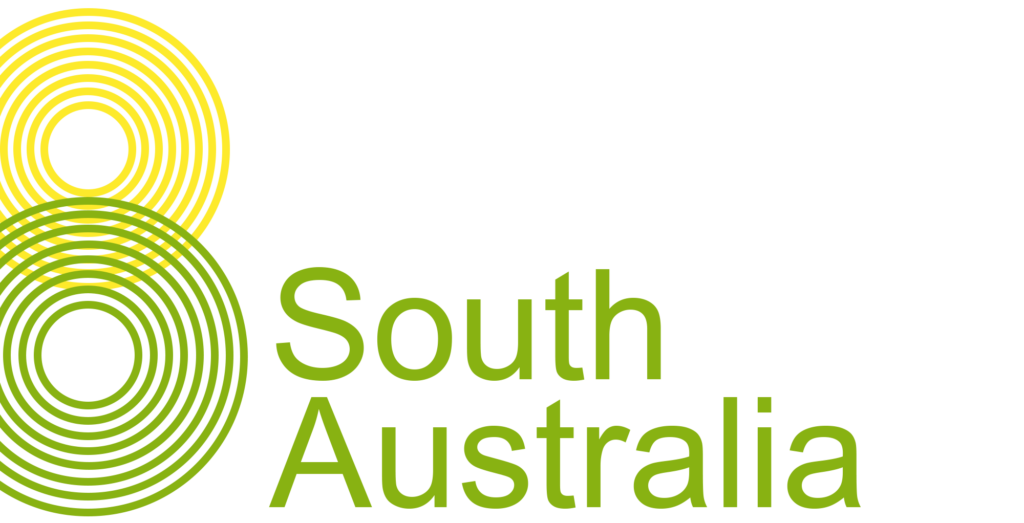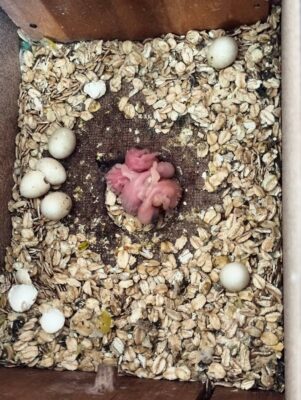
Budgerigar Eggs
Budgerigars, commonly known as budgies, are popular pet birds that are native to Australia. One of the fascinating things about these birds is their reproductive process, which includes laying eggs. In this article, we will discuss budgerigar eggs, including their appearance, size, and incubation period.
Appearance of Budgerigar Eggs
 Once a pair has bonded, and they’ve been placed in a breeding cage, the hen will typically start to spend more time in the nest box. She will remove most, if not all of the bedding, and chew around in there to make herself comfortable. A noticeable change in her droppings will occur, as her vent begins to swell up. Normally, close to 2 weeks after being paired, if the birds are in breeding condition, eggs will appear. Budgerigar eggs are small and oval-shaped, with a white color and a slightly glossy surface. They are approximately 1.9 cm long and 1.3 cm wide. Budgerigar eggs are also relatively thin-shelled, making them fragile and vulnerable to damage if handled improperly.
Once a pair has bonded, and they’ve been placed in a breeding cage, the hen will typically start to spend more time in the nest box. She will remove most, if not all of the bedding, and chew around in there to make herself comfortable. A noticeable change in her droppings will occur, as her vent begins to swell up. Normally, close to 2 weeks after being paired, if the birds are in breeding condition, eggs will appear. Budgerigar eggs are small and oval-shaped, with a white color and a slightly glossy surface. They are approximately 1.9 cm long and 1.3 cm wide. Budgerigar eggs are also relatively thin-shelled, making them fragile and vulnerable to damage if handled improperly.
Size & Shape
Compared to other bird species, budgerigar eggs are relatively small. They are approximately 1.9 cm long and 1.3 cm wide. However, the size of the egg can vary slightly depending on the age and health of the female budgerigar, and also her genetic background (some hens lay bigger eggs, and some odd shaped as a family trait). Younger females tend to lay smaller eggs, while older females lay larger ones. The porosity of the egg is always a good indicator of calcium levels in the hen.
Incubation Period
Once a budgerigar female lays her eggs, she will start incubating them to ensure proper development. The hen will start incubation after the 2nd or 3rd egg normally. The incubation period for budgerigar eggs is approximately 18 days, after which hatching occurs. During this time, you must keep the eggs warm and turn them regularly to prevent the yolk from sticking to the inside of the shell. The most critical period of incubation during the embryo’s development is during the first few days, so it is advisable not to disturb your eggs during this time. After five days of incubation, the process of egg candling can reveal if an egg is fertile or infertile. and as the cycle progresses, can also reveal problems such as dead in shell.
Conclusion
 Budgerigar eggs are fascinating and unique in their appearance, size, and incubation period. If you are a budgie owner, understanding the reproductive process of these birds can help you provide the best care for your feathered friends during the breeding season. Remember to handle their eggs with care, as they are fragile and delicate. By providing a warm and secure environment for your budgerigars and their eggs, you can ensure the successful hatching and development of their offspring.
Budgerigar eggs are fascinating and unique in their appearance, size, and incubation period. If you are a budgie owner, understanding the reproductive process of these birds can help you provide the best care for your feathered friends during the breeding season. Remember to handle their eggs with care, as they are fragile and delicate. By providing a warm and secure environment for your budgerigars and their eggs, you can ensure the successful hatching and development of their offspring.
